The original article was written by SoftFormance https://www.softformance.com/blog/b2b-saas-company/
By the end of the year, the annual growth rate of SaaS technologies will most likely surpass 17%.
What stands behind such rapid growth? I'll explain with an example.
John is an ambitious software founder who wants to develop a content management platform to a broad audience.
However, he sees a strong competition. Besides, the users' paying ability is questionable, and John has to attract a great number of consumers to cover the expenses.
Therefore, he decides to shift the focus and deliver a more complex content management system for business founders.
He develops a feature-packed B2B SaaS platform that attracts business owners with reasonable pricing policies and relevant features.
The platform becomes an overnight sensation. In less than 12 months, John generates millions in revenues.
He often recalls his early project planning and feels happy that he has chosen B2B SaaS instead of consumer-focused SaaS platform.
So, if you decide to launch a B2B SaaS solution that brings real value to businesses, you'll have no problems with finding the target audience.
Sounds attractive?
Then you should read this article to know the main features of B2B SaaS products, their main benefits, tips on how to promote such platforms, great B2B SaaS examples, and many more!
What is SaaS?
Let's start with a general definition of SaaS.
This notion stands for software as a service.
Basically, it is a business model in which a customer pays a software provider to buy a particular software solution.
In most cases, the customer will:
Receive a cloud-based product that provides you with specific functionality;
Be charged on a subscription basis (annually or monthly);
Get a core technological value (features, code, platform) that is maintained by a SaaS provider.
What is B2B SaaS?
In the introduction, I have mentioned the notion of B2B SaaS.
What is it, and how is it different from SaaS?
Actually, B2B SaaS can be viewed as a SaaS subcategory.
This notion stands for business-to-business SaaS solutions.
These are cloud-based platforms that provide particular functionality and value to businesses.
A perfect example of SaaS is Jira Atlassian.
It is a web platform that provides various businesses with task and workforce management functionality.
What's the Difference between B2B SaaS and B2C SaaS?
Sometimes, people confuse B2B SaaS with B2C SaaS.
Well, although both involve SaaS technology, these notions are very different in their essence.
B2B SaaS provides value to businesses. Hence, it is all about workforce management, automation, and task organization.
Meanwhile, B2C SaaS is oriented toward final consumers instead of providing value to businesses.
We can mention Netflix as an example of a B2C SaaS. This media hosting platform provides entertainment value to ordinary consumers.
So, the main difference between B2C and B2B SaaS is, actually, in the target audience.
The choice is up to you, but with B2B SaaS, you will focus on the most solvent customers.
How Does B2B SaaS Work?
Let's consider the example of Forward Forms to illustrate the flow of a B2B SaaS platform.
Forward Forms is a platform that provides stylists and beauty business owners with rich functionality for managing their online consultations and automating the documentation flow.
Here are some of the main features of this platform that are worth mentioning.
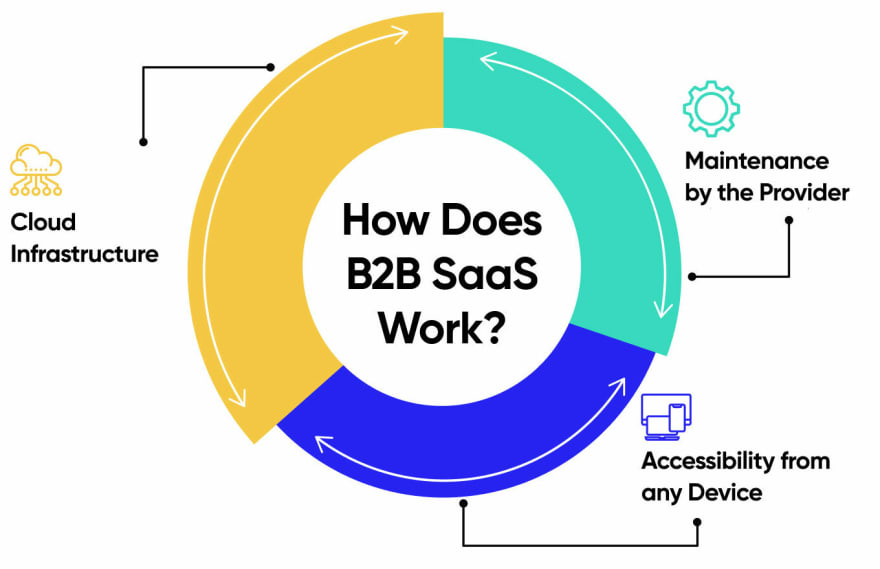
Cloud Infrastructure
Forward Forms is a cloud platform.
Therefore, it is based on a virtual server, which ensures its availability, scalability, and quality maintenance.
Most B2B SaaS solutions rely on cloud technologies provided by such giants as AWS, Google Cloud Platform, or Microsoft Azure.
Maintenance by the Provider
While using Forward Forms, stylists and beauty business owners don't need to update the platform or handle its maintenance.
Instead, all such issues are covered by the SaaS provider.
Updates are automated and any software crash is immediately fixed by Forward Forms administrators or specialists hired by the provider.
This principle is one of the core features of the SaaS approach.
Accessibility from any Device
Forward Forms customers can access the platform remotely anytime they want.
And, for sure, it goes about using any device.
This accessibility and convenience make business management features provided by Forward Forms even more convenient.
And one more time, it is a fundamental feature of most B2B SaaS platforms.
Forward Forms is an example of a B2B SaaS solution for small and mid-size businesses.
However, don't forget that there exist large B2B SaaS systems that bring advantages to big corporations.
Corporate B2B SaaS
A perfect example of a corporate B2B SaaS solution would be Confluence.
It is a team collaboration software applied by large corporations to help employees to communicate and exchange information.
Moreover, this corporate B2B SaaS platform integrates with various apps to bring even more value to big corporations.
For example, Confluence is included in the tech stack of Facebook, one of the world's biggest social networks.
Why did I mention this example?
Well, I'm just telling you that no company size is too big when it comes to B2B SaaS solutions!
How to Follow a B2B SaaS Business Model?
Now, let's provide our traditional step-by-step approach to developing an app.
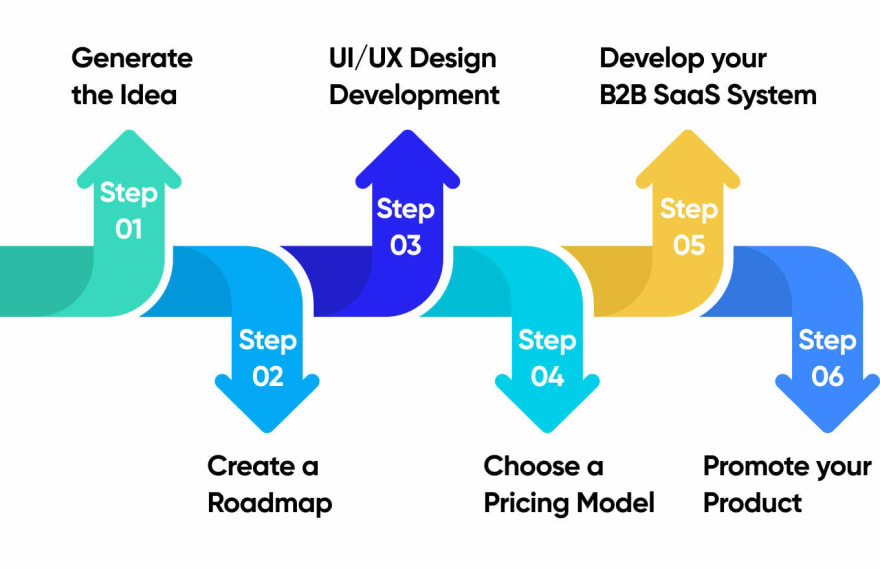
Just like any other software development project, this platform development flow starts with idea generation.
- Generate the Idea What type of businesses do you want to target? And which value will your product bring to them? Both these questions have to be answered at the idea generation stage. To keep everything safe and dry, make sure to run solid market researchю Identify the competitors, and determine the factors that will help your B2B SaaS platform sustain the competition. For example, the founders of Opesta, one of our notable SaaS projects, had the idea of creating a social media marketing automation platform. After a brief market overview, they decided to launch a platform that would automate Facebook advertising. In addition, they identified moderate competition and decided to make maximized customizability their main selling point.
- Create a Roadmap Once the idea is generated, it's just about time to decide on platform functionality and create a step-by-step plan for its development and promotion. From my perspective, this stage usually involves a lot of communication. You and your tech partner should understand all project implications and create a map that will guide the project over time. That was exactly the case with Opesta. My team thoroughly researched project requirements to provide the customer with a step-by-step approach to its implementation.
- UI/UX Design Development The next step involved developing a UI/UX design for a B2B SaaS platform. All these user interface parts and their components are extremely vital. Even though business owners are more focused on WHAT your app provides, they also pay attention to HOW it provides its benefits. So, make sure that your design is as simple as possible. At least, that is the approach that we have followed while developing Opesta.
- Choose a Pricing Model You should earn something from your B2B SaaS platform. And make sure to choose a subscription model before you start active app development. Stripe B2B SaaS integration may be a solution for easy in-app purchases. A popular way is to launch a SaaS platform with a tiered subscription. In this case, the customer gets different functionality sets, depending on which subscription type he or she purchases. Other subscription options for B2B SaaS platforms include: Fixed fee subscription; Pay-as-you-go option (you pay for the time or scope of the SaaS service you choose); Mixed subscription (unites elements of different subscription models); Custom subscription model organized according to your specific demands.
Returning to the case of Opesta, these guys decided to go with a fixed fee for a monthly subscription.
- Develop your B2B SaaS System That's when some real action breaks in. Your tech partner follows your requirements and the roadmap to create a B2B SaaS platform. There are many practices and technologies that help them handle this stage as fast as possible. Still, get prepared for some challenges! In the Opesta project, the challenge was integrating the platform with the Facebook API. Fortunately, we managed to find walkarounds and solve the problem in the shortest terms.
- Promote your Product with the Best Marketing Practices One thing is to develop a great B2B SaaS platform, and another is to promote it so that it gains a solid customer base. I will tell you more about the B2B SaaS sales strategy and marketing practices in the next chapter. As for the case of Opesta, these guys are a marketing startup. So, they definitely knew how to organize targeting and ad automation to increase their social media outreach. What Technology Can Help with the B2B SaaS Sales Process?Just like any other software development project, this platform development flow starts with idea generation.
- Generate the Idea What type of businesses do you want to target? And which value will your product bring to them? Both these questions have to be answered at the idea generation stage. To keep everything safe and dry, make sure to run solid market researchю Identify the competitors, and determine the factors that will help your B2B SaaS platform sustain the competition. For example, the founders of Opesta, one of our notable SaaS projects, had the idea of creating a social media marketing automation platform. After a brief market overview, they decided to launch a platform that would automate Facebook advertising. In addition, they identified moderate competition and decided to make maximized customizability their main selling point.
- Create a Roadmap Once the idea is generated, it's just about time to decide on platform functionality and create a step-by-step plan for its development and promotion. From my perspective, this stage usually involves a lot of communication. You and your tech partner should understand all project implications and create a map that will guide the project over time. That was exactly the case with Opesta. My team thoroughly researched project requirements to provide the customer with a step-by-step approach to its implementation.
- UI/UX Design Development The next step involved developing a UI/UX design for a B2B SaaS platform. All these user interface parts and their components are extremely vital. Even though business owners are more focused on WHAT your app provides, they also pay attention to HOW it provides its benefits. So, make sure that your design is as simple as possible. At least, that is the approach that we have followed while developing Opesta.
- Choose a Pricing Model You should earn something from your B2B SaaS platform. And make sure to choose a subscription model before you start active app development. Stripe B2B SaaS integration may be a solution for easy in-app purchases. A popular way is to launch a SaaS platform with a tiered subscription. In this case, the customer gets different functionality sets, depending on which subscription type he or she purchases. Other subscription options for B2B SaaS platforms include: Fixed fee subscription; Pay-as-you-go option (you pay for the time or scope of the SaaS service you choose); Mixed subscription (unites elements of different subscription models); Custom subscription model organized according to your specific demands.
Returning to the case of Opesta, these guys decided to go with a fixed fee for a monthly subscription.
- Develop your B2B SaaS System That's when some real action breaks in. Your tech partner follows your requirements and the roadmap to create a B2B SaaS platform. There are many practices and technologies that help them handle this stage as fast as possible. Still, get prepared for some challenges! In the Opesta project, the challenge was integrating the platform with the Facebook API. Fortunately, we managed to find walkarounds and solve the problem in the shortest terms.
- Promote your Product with the Best Marketing Practices One thing is to develop a great B2B SaaS platform, and another is to promote it so that it gains a solid customer base. I will tell you more about the B2B SaaS sales strategy and marketing practices in the next chapter. As for the case of Opesta, these guys are a marketing startup. So, they definitely knew how to organize targeting and ad automation to increase their social media outreach. What Technology Can Help with the B2B SaaS Sales Process?
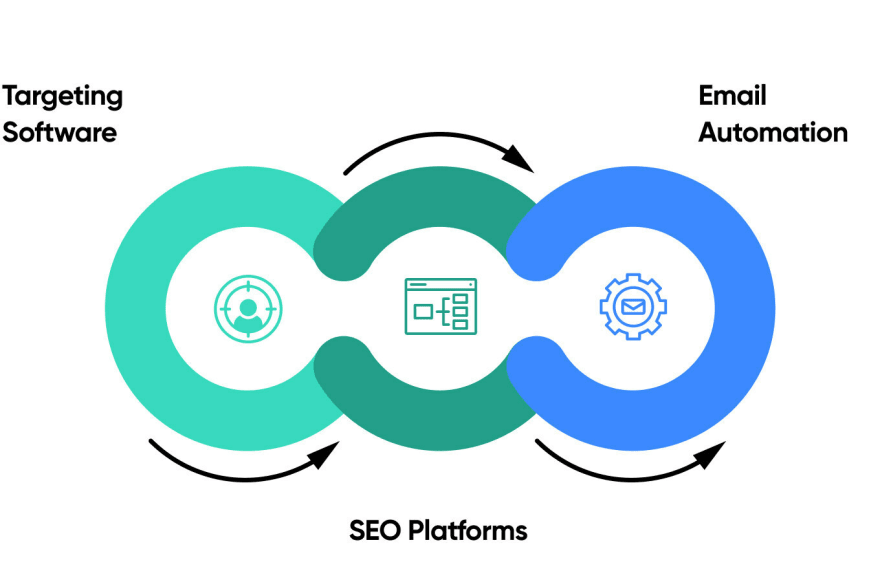
So, let's discuss SaaS marketing practices in more detail.
Surely, it goes about applying the right practices and marketing approaches.
So, here are some technologies that will help you enhance B2B SaaS sales.
Unsurprisingly, most of these technologies are examples of B2B SaaS as well.
Targeting Software
First of all, you should establish your target audience. Those are the people that will see your ads and be convinced to use your B2B SaaS platform.
Guess what? You can handle all these challenges with targeting software.
It will help you research the market and find the right target audience.
A perfect example of such a platform is Audiense. It provides business owners with business insights that help develop the right targeting strategy.
Email Automation
Nowadays, email marketing is a must-have way to promote your software product.
But it may also be very time-consuming.
To handle all things faster, you should apply software that will automate all your mailing lists and messaging.
A perfect example of a great emailing automation platform would be Mailchimp.
SEO Platforms
One more essential type of marketing software includes SEO platforms.
If you're into content marketing, you should load your content with the right keywords distributed in the right proportion.
That's when SEO platforms come into action.
B2B SaaS apps such as Ubersuggest will help you come up with the right selection of the most promising keywords.
In our agency, we're using Ubersuggest pretty successfully to get blog posts and landings from this website to the top of Google search results.
SaaS B2B Marketing vs. Traditional Marketing
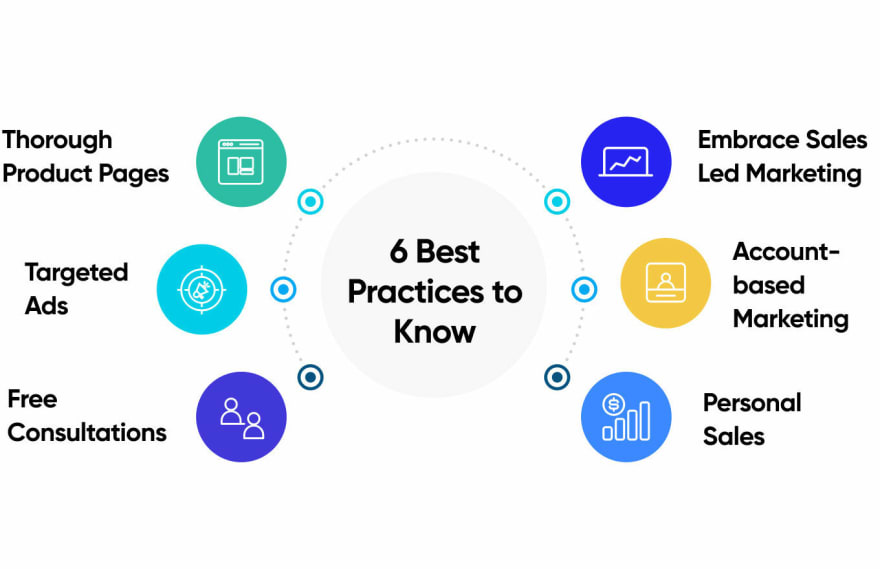
There's a great temptation to apply traditional marketing approaches. And, in many cases, they will go.
Still, there are some differences between B2B SaaS marketing and traditional marketing that you should discuss.
The table below illustrates them.
Traditional Marketing:
Buyer Journey - A typical buyer journey takes from a few seconds to a few days and involves around 4 steps (awareness, consideration, decision, and delight).
Buyer Impulse - Buyer impulses account for 40–80% of online purchases.
Customer Retention - Average customer retention across most technology-driven industries ranges between 63% and 84%.
B2B SaaS Marketing:
Buyer Journey - The B2B SaaS buyer journey may take weeks or even months and often involves more steps. Or some steps are repetitive.
Buyer Impulse - Buyer impulses are almost non-existent in B2B SaaS sales because most decisions are well-thought and supported with analytics.
Customer Retention - Average B2B SaaS retention rate is 92–97% because business owners embrace stability and rely on tried and trusted solutions.
B2B SaaS Marketing: 6 Best Practices to Know
Here are six useful tips that will help you boost SaaS B2B sales.
- Thorough Product Pages Business owners need to know everything about your product or service. So, make sure to provide them with all possible information they may need to know. The more details you include in your product descriptions, the better.
- Targeted Ads Targeting is a must-have solution for B2B SaaS lead generation. Don't run for high numbers of people who see your ad. Make sure that it is seen by people who are really interested in your services. So, make sure to analyze the market properly and apply the best targeting apps. In this case, your offers will find the right people.
- Free Consultations Business owners are easily attracted to free offers. That's why you may offer a free consultation where you will share some useful details. Don't get too specific, but provide enough information to keep your potential customer intrigued. You cannot imagine how much this intrigue matters when it comes to acquiring a new customer!
- Embrace Sales Led Marketing In this case, your sales team becomes the main driver of your marketing process. Rely on experienced and flexible sales specialists who certainly know how to transform any promising lead into an actual customer. And make sure to reach each and every lead because you never know who will bring you real profits.
- Account-based Marketing It is a tried and trusted marketing practice in the tech industry. Account-based marketing means treating each potential customer as a market. This means reaching potential clients personally and delivering custom presentations for each and every of them. Sounds too challenging? Then, remember that you're working in the B2B sphere. Here, just a few solid customers can cover all your software expenses.
- Personal Sales Many business owners believe that valuable cooperation decisions should be settled with other business owners. That's why they may expect you, as a B2B SaaS founder, to convince them why your product is the best solution for them. Mind this because, sometimes, to attract really promising customers, you should practice your personal communication skills. And, surely, don't forget about high (like, really high) levels of personalization in B2B marketing. What Are KPIs for B2B SaaS?

Now that you know a little bit more about B2B SaaS marketing practices, let's find out how you can evaluate their results.
Let's dive into key performance indicators of B2B SaaS platforms.
The list of B2B SaaS customer retention metrics to keep track of includes the following:
Customer Retention Rate
It is a rate showing how your business retains customers over a certain period of time.
Renewal Rate
Here it goes about the percentage of customers who renew the subscription for your service once their subscription period has expired.
Customer Churn Rate
This metric is the complete opposite of customer retention.
Here it goes about the percentage of customers who have stopped using your service over a specific period of time.
Revenue Churn Rate
Here's one more rate to show the losses.
The revenue churn rate is a rate at which your business loses revenue from existing customers over a specific period of time.
Existing Customer Revenue Growth Rate
Everything seems to be quite evident here.
The existing customer revenue growth rate shows the impact of your customer retention efforts on your revenue.
Customer Lifetime Value
Basically, it is about the amount of money or other value that a single customer will bring you over his or her lifetime.
The Average Revenue per User (ARPU)
How much revenue does a single subscriber bring you over a given period?
The average revenue per user metric is the answer.
Net Revenue Retention (NRR)
This metric shows the security of your B2B SaaS business.
It provides you with information on recurring revenue that you have retained from current customers over a specific time period.
Basically, this metric enables you to see the full picture of your platform's profitability.
Net Promoter Score
This metric is more about customer satisfaction.
It helps you understand how satisfied your customers are and whether they are ready to recommend your service to others.
Customer Acquisition Cost (CAC) Payback Period
This metric shows the amount of time it will take you to return what you've spent on acquiring your customers.
Advantages of B2B SaaS Products
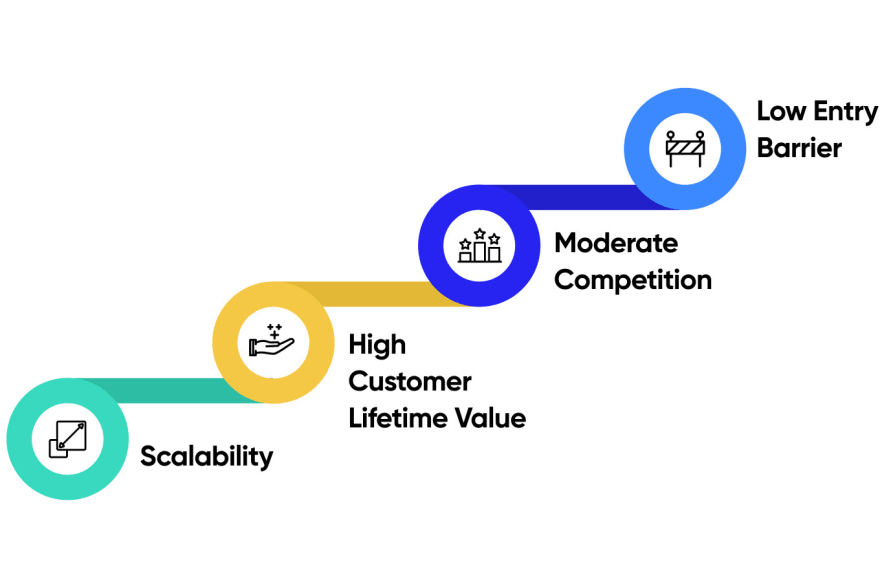
Now, let's dive into some crucial advantages that a B2B SaaS platform will bring you if everything is done well.
Scalability
When you're running your B2B SaaS platform, you get prepared for the upcoming updates from the start.
That's why B2B SaaS platforms are often built with dynamic architecture that is simple to upgrade.
Also, you easily identify your customer demands and implement new features to give business owners what they want.
High Customer Lifetime Value
When you run a B2B SaaS startup, most of your customers are business owners.
And they are ready to pay solid money for your services.
That's why customer lifetime value is higher than in B2C SaaS company solutions.
This means that even a few well-paying customers can cover most of your expenses.
Moderate Competition
I'm not trying to convince you that the B2B SaaS market is completely devoid of competition.
No, actually, there are many B2B software as a service companies.
However, there's a great space for variation and exceptional ideas.
Any business type may have unique needs that can be covered by your product or service.
For example, there's even a B2B SaaS platform that automates proposals for creative businesses.
What I'm trying to tell you is that there's always an opportunity to find a B2B niche with moderate or low competition.
Low Entry Barrier
While planning your B2B SaaS startup, you can dream big without spending too much.
Generate your unique idea, find the right software developers, and develop an MVP (Minimum Viable Product) for your platform to see how it works.
You won't need to allocate a very big budget. But you will have a great opportunity to see whether your idea is as promising as you think.
Shortcomings of B2B SaaS Products

There are always downsides, and B2B SaaS products are not exceptional in this regard.
Although these disadvantages are far from critical, you should know and consider them before launching your SaaS B2B platform.
You Handle the Maintenance and Upgrade
It is a great advantage for B2B SaaS customers but a great disadvantage for its founders.
Meanwhile, you cannot avoid it because handled upgrades and maintenance is one of B2B SaaS selling points.
Consider the example of Shopify. Its customers won't fix anything when the platform crashes or shows productivity issues.
They will expect a SaaS provider to handle these problems instead.
Fortunately, with the proper software development approach and ahead-planning, maintenance and upgrades of your platform will be much less challenging than they seem.
Competition with PaaS, IaaS & B2C SaaS
There are popular alternatives to SaaS. These are PaaS (platform as a service) and IaaS (Infrastructure as a Service). And don't forget about B2C SaaS!
With PaaS, the customer receives a cloud platform on which he or she can build his solution.
With IaaS, it goes about a ready infrastructure for the upcoming app.
The main benefits of these approaches are higher customizability and enhanced control over the app.
Perfect examples of PaaS and IaaS are Windows Azure and Digital Ocean, respectively.
The good news is that many customers seek speed and handled maintenance, things that PaaS and IaaS won't give them.
As for B2C SaaS, these solutions are oriented towards a different user category.
So don't be afraid that business founders will gladly substitute your professional B2B platform with a B2C service and its limited functionality aimed at a mainstream user. Such cases are far from frequent.
What Are the Most Common Problems in a B2B SaaS Company?
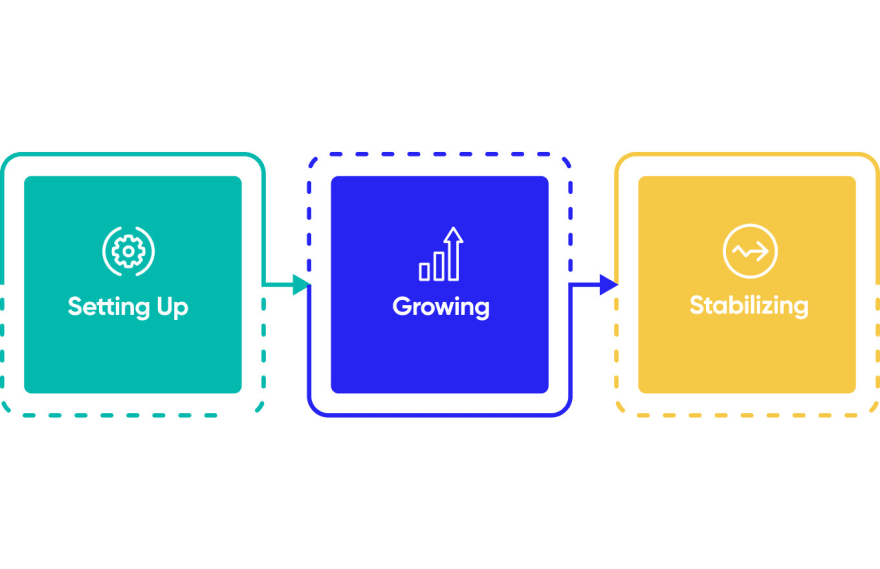
Surely, you'll never avoid challenges while building your software product.
And B2B SaaS development is not an exception.
Here are the most common problems that you may encounter while building your B2B software as a service solution.
Setting Up
Imagine that you have developed a decent software as a service app for business owners.
You expect everything to run well, but you lack expertise and encounter some minor problems while setting the app up.
As a result, some features don't work the way they should, and the system crashes from time to time.
You quickly fix all the troubles, but your early customers have already had some unpleasant experiences with your product.
And they're quickly spreading the word, which ruins your reputation.
And there's almost nothing more challenging than restoring the ruined reputation.
That's why you should execute everything brilliantly even in the earliest stages.
It is a matter of experience, and that's why a solid tech team will help.
Growing
I've already mentioned that you should constantly upgrade your B2B SaaS product to stay competitive.
However, this growth brings many issues.
What features should you include in your product? How can you implement it properly? How to update your app without disrupting its work? How not to ruin everything with your updates?
One more time, you must rely on experts to handle all these problems in style.
Stabilizing
And, for sure, no customer will be satisfied with a product that doesn't know what stability is.
Whether it goes about productivity issues, crashes, or too frequent platform updates, such issues may harm your business.
That's why maintenance and stabilization matter to your revenues.
And that's why consistency and a thorough ahead-planning are vital for your product development and upgrade strategy.
14 Great Examples of B2B SaaS Companies
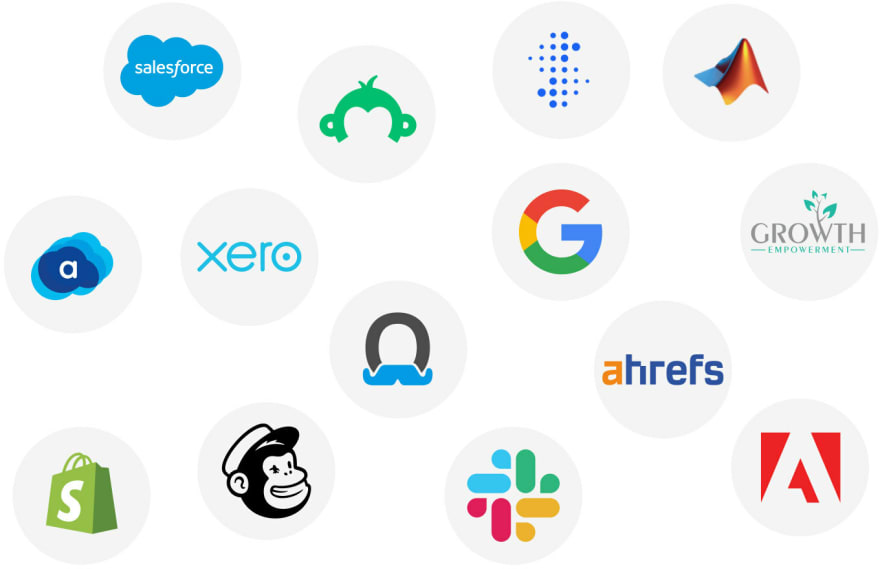
Now that you know about both ups and downs of running your B2B SaaS product, let's take a look at some inspirational success stories.
I've already mentioned some products from this list in the previous chapters.
However, B2B SaaS platforms mentioned here are so good they definitely deserve to be mentioned a few times.
- Google For many people, Google is only about the online search bar and information provided per request. In reality, it is a large digital system that involves a great range of services, ranging from Google Sheets to Google Ads. With more than 6 million buying businesses using its suite, Google proves to be the most popular B2B SaaS platform in the world.
- Slack Here's one of the world's most popular CRM systems applied by many thousands of businesses worldwide. What makes Slack special is that it is a convenient and feature-packed business messenger. No wonder the platform already had 18 million active users in 2020.
- Adobe When you think of digital content, you think of Adobe. With an impressive 22.7% year-over-year growth, it is the world's most popular image and content management platform. Also, Adobe is a great example of a B2B SaaS with a quality upgrade strategy. Legacy services are constantly retired and replaced with the ones that bring real value to the users.
- Shopify It is a huge e-commerce system with thousands of businesses using its accounts for sales. To prove that Shopify is a real market giant, I'll just tell you that it generates around $3 billion in annual revenues.
- MailChimp I've already mentioned MailChimp as the leader of the email automation software domain. With its solid marketing practices and premium offers, the company has obtained a loyal fanbase that constantly expands. Actually, it already has more than 12 million loyal users.
- MathWorks When it comes to mathematical computing software, MathWorks is one of the global leaders. According to their best SaaS B2B sales deck, more than 5000 colleges and universities are already subscribed to MATLAB, their most popular product.
- SurveyMonkey If a business founder wants to enhance one's business practices with dynamic surveys, SurveyMonkey is a great solution. The platform already has 600,000 active users. And this number is constantly growing, as the demand for online surveys never ceases.
- AVADA Here's one more SaaS service that brings value to marketing specialists. AVADA helps business owners automate marketing practices and perfectly integrates with e-commerce platforms. The list of such platforms includes Shopify, which has been mentioned above.
- Salesforce Here comes the world's most popular Customer Relationship Management (CRM) platform. Salesforce collects customer data, gets insights from such information, and ensures quality customer communication. Nowadays, the platform is actively used by 150,000 customers from various businesses across the world.
- Solvenzio Here's a cutting-edge SaaS solution for the fintech industry. The platform enables businesses to check whether their customers can pay them. Solvenzio provides business owners with two crucial options: long-term annual subscription to monitor specific companies; a one-time payment validation request.
I must also say that this brilliant SaaS platform has been developed by my team 🙂
- Xero Xero is feature-packed accounting software for small and mid-size businesses. Just one number can tell you how successful this B2B SaaS is. The total lifetime value of Xero subscribers exceeds $4 billion.
- Ahrefs If you're working on SEO optimization, you know Ahrefs. As one of the world's most popular SEO tools, it runs thousands of keyword searches and provides accurate estimates of keyword traffic. This year, Ahrefs has reached an important milestone as its revenue have exceeded $100 million.
- Opesta I've already mentioned this SaaS platform in this article. Opesta is one of our most notable creations - a feature-packed marketing automation tool that perfectly integrates with Facebook Messenger. My team coped with many challenges to create a B2B SaaS platform supplied with data load balancing and monitoring tools.
- Growth Empowerment Here's one more B2B SaaS platform developed by my team. Growth Empowerment is a SaaS for psychologists & therapists. It allows them to easily manage customers, assign appointments, set consulting sessions, and manage payments. In Conclusion Let's return to the story that I've mentioned at the beginning. John was extremely satisfied with his SaaS business. Because despite some challenges, it is always better to have business owners as your users instead of ordinary hobby-lovers with questionable customer lifetime value. That's why B2B SaaS solutions will be more profitable than B2C SaaS businesses in the vast majority of cases. And it is challenging to find a better moment for building your B2B SaaS product. From my practice, the ROI is extremely high, much higher than in stock, real estate, and many other lucrative industries. So give business owners what they want! This guide is what will help you plan your B2B SaaS product properly. And we will handle all the technical stuff. Contact us and let's give business owners what they need with your brilliant B2B SaaS solution. FAQ How to measure metrics for B2B SaaS companies? To measure their metrics properly, B2B SaaS companies should record the following parameters: customer retention rate, renewal rate, customer churn rate, revenue churn rate, customer lifetime value (CLV), existing customer revenue growth rate, the average revenue per user (ARPU), net revenue retention (NRR), customer acquisition cost (CAC) payback period, net promoter score (NPS). How do I find an idea for a B2B SaaS company? Choose a sphere you're interested in, thoroughly research the market, analyze the competitors, and find demand gaps that can be covered by your product. How do I start a B2B SaaS business? First, you should come up with a good idea. Then, create a roadmap for B2B SaaS development. Further steps involve design and subscription model planning. After that, you can develop the platform and, then, promote it with the best marketing practices.



Top comments (1)
@kateryna_pakhomova, great i like your post just you can little organize the text on few places.
But the information is gold mine. Most of the points we have applied for our SaaS Product.
We worked on the major problem of the B2B and B2C which is high churn. Churnfree can reduce thier business churn request up 40% whcih means that can retain most of the customers who applied for the cancel request.
We also implement some points which you have mentioned in the post for the marketing purpose.
you can check out our product: churnfree.com/
Thanks for sharing i'm following you to see other such amazing detailed post.